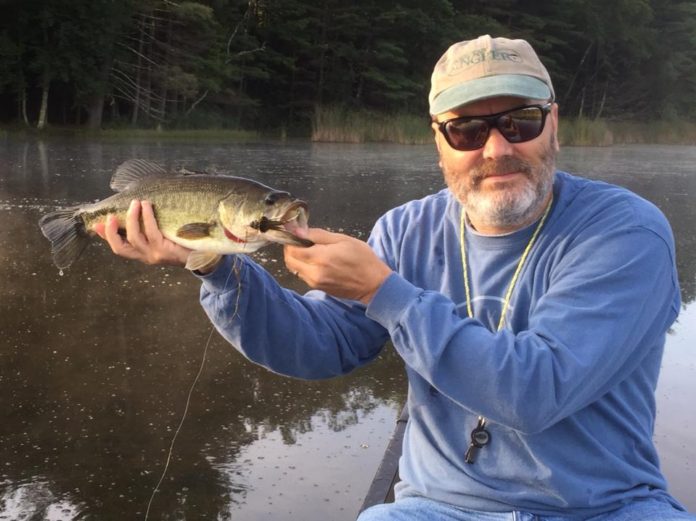This chunky largemouth fell for a deer-hair slider, the Umpqua Swim Frog diver.
Photo by Reid Bryant
Catching largemouth bass on surface flies is a lot of fun, but it’s not as easy as you might think. Bass aren’t like northern pike, almost always willing to chase down a big meal. In fact, bass can be quite picky and will often ignore big, noisy topwater flies. Here are a few steps you can take to improve your odds.
1. Fly choice
Traditional deer-hair bugs and balsa poppers look cool, are fun to fish, and make a lot of commotion on the water. Sometimes, however, all that noise and splashing is too much, especially when the surface of the water is dead calm. In these situations, I much prefer a smaller slider, such as a Sneaky Pete or small Dahlberg-style diver, which slips under the water when you strip it. And when I do choose a popper, I usually go counter to the “big fly, big fish” rule and choose smaller patterns. The largest bass I ever caught on a fly was on a Gaines Bass Duster that’s about an inch and a half long. (Sadly, I don’t think Gaines makes this bug anymore.) Don’t forget Pencil Poppers, either. These offer a much less bombastic action, and work great for fishing holes in weedbeds—just cast the fly into the open water and twitch it a few times. Finally, dragonfly imitations work great in the heat of a sunny day when larger topwater bugs rarely draw strikes.
2. Retrieve
A subtle, erratic retrieve will almost always outperform a chug-chug-chug steady strip. The traditional method of fishing a topwater is to chug it two or three times and then let it sit until the rings disappear. You’ll be amazed by how often a fish will strike the fly as it just sits there doing nothing. If you can see a fish under your motionless fly, try giving it just a twitch to suggest life. That’s sometimes all it takes to trigger a strike.
3. Going Big
The times when the big, loud poppers perform best are when you’re fishing deep water—such as on the outer edge of a large weedbed—or when the water is choppy. These are the times when you need to get a fish’s attention in a big way.
Experimenting with fly choice and retrieve will surely draw more strikes, and it makes the whole project of bass fishing more interesting and engaging.
Credit: Source link






























